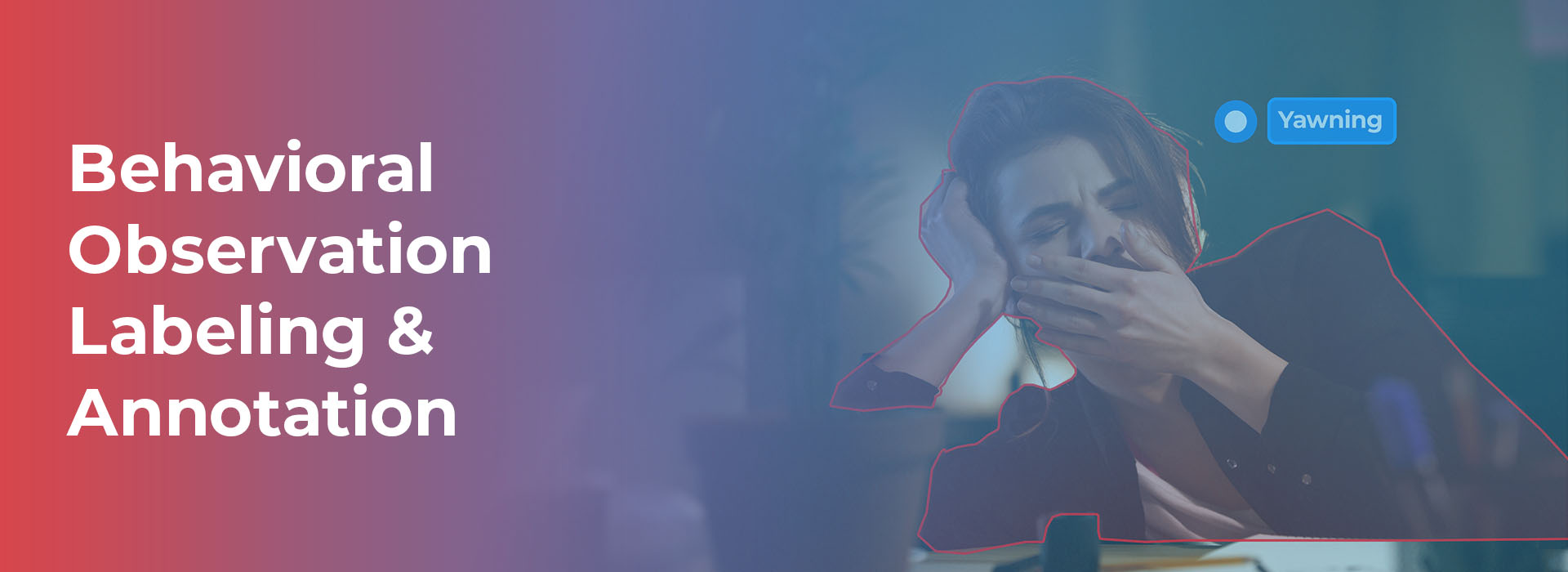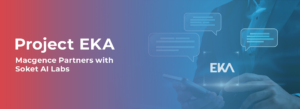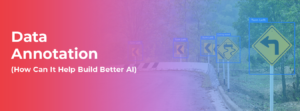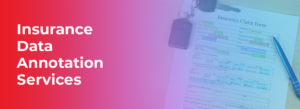A Data Scientist’s Guide to Behavioral Observation Labeling/Annotation
If you’ve spent any time building machine learning models, you’ve probably realized one truth: your models are only as good as your data. That’s where behavioral observation labeling steps in. Whether you’re fine-tuning an AI for object detection or training algorithms to understand customer behavior, annotated data forms the foundation that determines your success.
But what exactly is behavioral observation labeling, and why is everyone talking about it? Today, we’re pulling back the curtain on this crucial process. By the end, you’ll understand why mastering labeling is a must-have skill in data science and machine learning—and how companies like Macgence are making it easier.
What is Behavioral Observation Labeling?
At its core, behavioral observation labeling (or annotation) is the process of tagging raw data—videos, images, text, audio—with meaningful labels that help AI/ML systems learn patterns. Understanding human body behavior is crucial in advancing AI/ML systems, as it enables these technologies to interpret and predict actions with greater accuracy. By accurately labeling body movements and gestures—such as a nod, a hand wave, or even posture changes—AI can learn to recognize patterns that reflect intent or emotion.
This level of precision can unlock valuable applications across diverse fields. For instance, in healthcare, labeled gestures can help track patient recovery progress or detect early signs of disorders. In security, analyzing body behavior can assist in identifying potential threats or unusual activities. Meanwhile, in user experience design, understanding subtle gestures can allow AI to create more intuitive and responsive interfaces. The depth of insight provided by labeling human behavior makes it a critical component for creating intelligent systems that truly understand and adapt to the human experience. Think of it as teaching AI what’s what. For example:
- Labeling an image of a dog with “dog.”
- Identifying specific user behavior within a dataset, like clicks or scrolling patterns.
- Highlighting emotions in recorded conversations, such as “happy” or “frustrated.”
Accurate labels transform data from chaos to clarity. Without it, even the most advanced algorithms struggle to deliver meaningful results.
Why Labeling Is Vital for AI/ML Applications
Imagine trying to solve a jigsaw puzzle with blurry, incomplete pieces. That’s what building an AI model without labeled data feels like. Behavioral observation labeling ensures your model receives exactly what it needs to succeed.
Here’s how the process shapes machine learning outcomes:
- Accuracy: Labels guide models by providing explicit examples of what to look for. The better the labeling quality, the more precise the predictions.
- Task-Specific Insights: Whether it’s natural language processing (NLP), computer vision, or behavioral forecasting, customized labeling enhances adaptability.
- Scalability: Once trained on well-annotated datasets, models can process massive amounts of new data quickly and efficiently.
At Macgence, we specialize in providing accurately labeled datasets for training and testing AI/ML models. Whether your focus is facial expression recognition, sentiment analysis, or environmental imaging, we’ve got you covered.
Types of Behavioral Observation Labeling
Not all labeling is created equal. Depending on the use case, you might encounter different forms of behavioral observation labeling. Here’s a breakdown:
1. Object Detection
Object detection involves identifying and labeling objects within an image or video. For instance, training an autonomous vehicle to recognize pedestrians, stop signs, or obstacles requires meticulous object detection. Example tools include bounding boxes, which outline each object.
2. Image Classification
Image classification assigns a single label to an image based on content. For example, labeling a picture of apples as “fruit” helps train retail algorithms to identify product categories automatically. It’s widely used in industries like agriculture and e-commerce.
3. Sequence Labeling
This type of labeling involves annotating sequences, such as text or audio files, with tags specific to each element. Sentiment analysis in customer feedback is a common application, where phrases like “extremely satisfied” are tagged as positive sentiment.
4. Behavioral Video Annotation
For behavioral video analysis, annotators focus on tagging actions, such as identifying when someone smiles, crosses their arms, or makes eye contact. This is often used in fields like surveillance and human-computer interaction.
Every type of labeling serves a unique purpose, and selecting the right one depends on your project’s goals. Don’t be afraid to mix and match techniques for more complex use cases.
Challenges & Best Practices for Labeling Behavioral Data
While it’s easy to understand why labeling is critical, implementing it effectively comes with its fair share of challenges. Here’s what often stands in the way:
Common Challenges
- Bias in Data Labels: Annotator bias can skew labels, leading to undesired or inaccurate outcomes in AI predictions.
- Quality Control: With high-volume data labeling, how do you ensure every label meets the required standard?
- Scalability: Manually labeling large datasets is time-consuming and resource-intensive.
Best Practices
Tackling these challenges requires a strategic approach. Here are some key tips:
- Diversify Your Data Sources: Use datasets from various demographics and scenarios to reduce implicit biases.
- Double-Check Accuracy: Build a quality assurance (QA) process that involves cross-verifying labels through peer review.
- Invest in Semi-Automation: Employ tools or platforms that can pre-annotate data, with human annotators refining the results.
- Collaborate with Experts: Partnering with professional data annotation providers, like Macgence, can save you time while ensuring top-notch results.
The Future of Behavioral Observation Labeling
The field isn’t just advancing—it’s evolving rapidly. Here’s what we’re excited about for the future of behavioral observation labeling:
- Automated Labeling Tools: Technologies powered by AI are increasingly able to generate initial labels at lightning speed, cutting down manual workload.
- Ethical AI Prioritization: Expect advancements that embed fairness checks directly into the annotation pipeline.
- Specialized Datasets: We foresee a growing demand for niche datasets tailored to emerging fields such as healthcare AI, climate prediction, and adaptive learning.
Macgence is at the forefront of these innovations, constantly refining how we deliver data solutions for modern AI/ML challenges.
Elevate Your AI/ML Models with Accurate Labeling
Behavioral observation labeling isn’t just a step in the development pipeline—it’s the backbone of every successful AI/ML application. By combining expert curation with emerging automation technologies, you can achieve unparalleled precision in your outcomes.
Whether you’re a data scientist tackling your next big project or a machine learning engineer improving model accuracy, precise labeling can make all the difference. If you’re looking for reliable annotated data, get in touch with Macgence today. Together, we’ll pave the way for smarter, faster, and better-performing AI.
FAQs
Ans: – Labeling is often one of the most time-intensive parts of preparing data for machine learning. For large datasets, outsourcing to professional teams like Macgence can significantly accelerate the process without compromising quality.
Ans: – Automated labeling tools rely on AI to annotate data, but they often require human validation for accuracy. Human labeling offers more nuanced and context-aware annotations, particularly important for behavioral analysis.
Ans: – Macgence employs a rigorous quality control process involving multiple annotators, checks for consistency, and advanced QA tools. This ensures data accuracy aligns with project requirements.
You Might Like
February 28, 2025
Project EKA – Driving the Future of AI in India
Spread the loveArtificial Intelligence (AI) has long been heralded as the driving force behind global technological revolutions. But what happens when AI isn’t tailored to the needs of its diverse users? Project EKA is answering that question in India. This groundbreaking initiative aims to redefine the AI landscape, bridging the gap between India’s cultural, linguistic, […]
March 7, 2025
What is Data Annotation? And How Can It Help Build Better AI?
Spread the loveIntroduction In the world of digitalised artificial intelligence (AI) and machine learning (ML), data is the core base of innovation. However, raw data alone is not sufficient to train accurate AI models. That’s why data annotation comes forward to resolve this. It is a fundamental process that helps machines to understand and interpret […]
March 6, 2025
Vertical AI Agents: Redefining Business Efficiency and Innovation
Spread the loveThe pace of industry activity is being altered by the evolution of AI technology. Its most recent advancement represents yet another level in Vertical AI systems. This is a cross discipline form of AI strategy that aims to improve automation in decision making and task optimization by heuristically solving all encompassing problems within […]
March 5, 2025
Use of Insurance Data Annotation Services for AI/ML Models
Spread the loveThe integration of artificial intelligence (AI) and machine learning (ML) is rapidly transforming the insurance industry. In order to build reliable AI/ML models, however, thorough data annotation is necessary. Insurance data annotation is a key step in enabling automated systems to read complex insurance documents, identify fraud, and optimize claim processing. If you […]


 Previous Blog
Previous Blog







